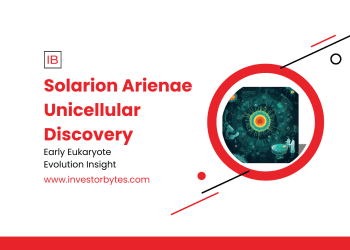In a stunning revelation that rewrites the eukaryotic evolutionary playbook, scientists unveiled Solarion arienae on November 19, 2025—a minuscule, sun-shaped unicellular eukaryote that anchors an entirely new phylum and supergroup, Disparia, in the tree of life. Discovered serendipitously in a decade-old lab culture of Croatian marine ciliates at Charles University in Prague, this rare protist, measuring mere micrometers, evaded detection until its host ciliates perished, spotlighting its predatory prowess via a unique extrusome structure for ensnaring prey. Published in Nature, the findings by Marek Valt, Ivan Čepička, and collaborators fuse phylogenomics with ultrastructural analysis, positioning Solarion as a “living fossil” that bridges ancient alphaproteobacterial mitochondria to modern complexity.
Genomically, Solarion‘s 43,872-base-pair mitochondrial genome harbors archaic gems like the secA gene—a bacterial protein secretion relic lost in nearly all eukaryotes—hinting at the last eukaryotic common ancestor’s (LECA) metabolic versatility. Alphafold modeling reveals SecA’s role in exporting proteins across mitochondrial membranes, a trait echoing pre-endosymbiotic alphaproteobacteria. With 240 protein-coding genes across 87 taxa, phylogenomic trees confirm Disparia’s deep divergence, clustering Solarion with Provora, Hemimastigophora, and Meteora into a kingdom-level clade. Morphological quirks abound: biflagellated cells alternate between sunburst-like radiate forms for feeding and elongated swimmers, with a ventral cytostome and dorsal extrusomes deploying thread-like extrudosomes for predation—unprecedented in protistology.
This rarity underscores microbial dark matter: Solarion thrives in low-oxygen marine sediments globally, yet eluded cultivation until now, suggesting Disparia’s fossilized diversity once rivaled Amoebozoa. Evolutionary implications ripple through astrobiology, illuminating endosymbiosis mechanics and LECA’s toolkit, potentially 1.5 billion years old. For rare eukaryote discoveries 2025, Solarion arienae exemplifies how targeted culturing unearths hidden branches, fueling quests for Provora-like relics. Critics note sampling biases, but proponents envision metagenomic hunts in anoxic niches yielding Disparia kin.
Broader stakes? This phylum’s mitochondrial holdouts challenge streamlined organelle dogma, inspiring synthetic biology for resilient powerhouses. As climate shifts stir sediment microbiomes, Solarion’s endurance offers blueprints for extremophile engineering. In 2025’s biodiversity renaissance, this eukaryotic enigma doesn’t just expand the tree—it roots it deeper, reminding us life’s tapestry hides in plain sight, one microbe at a time.








